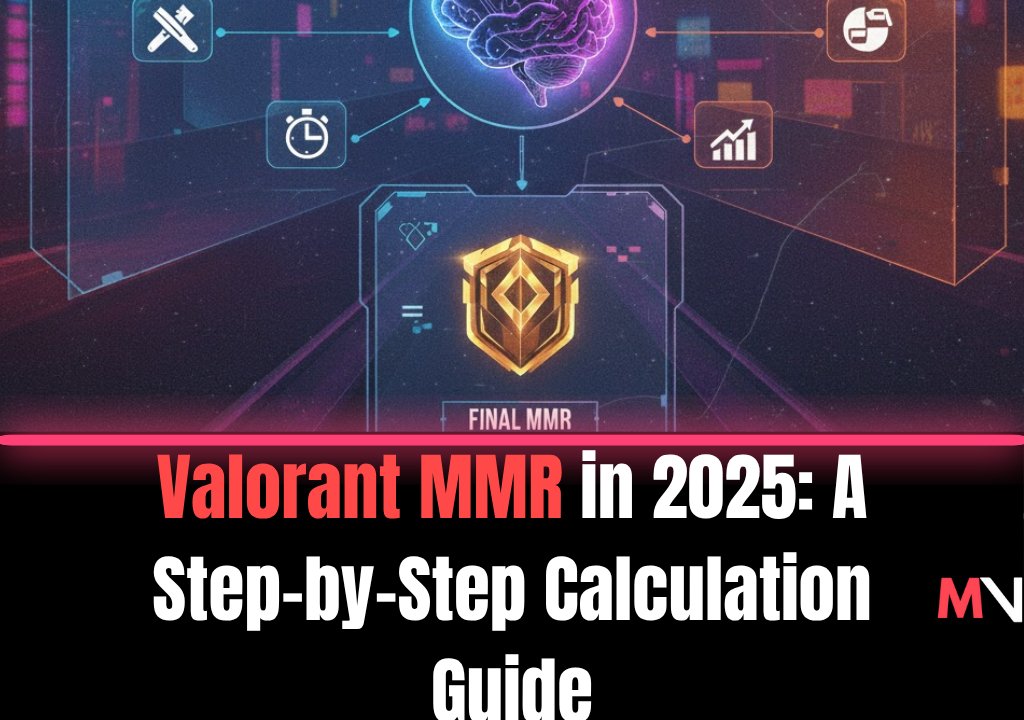Valorant MMR in 2025: A Step-by-Step Calculation Guide
What Valorant MMR Really Is (and Why It Matters)
Your hidden MMR (Matchmaking Rating) is the internal number Riot uses to build fair lobbies. It drives who you face, your lobby’s average skill, and how much RR (Rank Rating) you gain or lose. Your visible rank is a badge; your MMR is the engine.
The Inputs That Influence MMR Calculation
- Match outcome: Wins move MMR up, losses move it down—this is the primary driver.
- Opponent strength: Beating higher-MMR teams boosts you more; losing to lower-MMR teams hurts more.
- Round differential: Clear wins (e.g., 13–5) typically signal stronger form than 13–11.
- Individual impact (lower–mid ranks): Consistency in impact—first bloods, plants/defuses, trade efficiency, low non-trade deaths—can modestly affect adjustments.
- Recency and stability: Long, stable performance trends calibrate faster than streaky swings.
- Party size: Duo queue can slightly alter expectations based on the pair’s combined MMR.
Key idea: Wins > everything. Individual stats matter most as tiebreakers and calibration helpers, especially below Immortal.
he 2025 Step-by-Step MMR Update Loop (Per Match)
1) Pre-match expectation
The system computes your team’s expected win chance from both sides’ MMR. If you’re favored, your “expected value” is higher.
2) Outcome + margin
- Win vs. favored: Small to moderate MMR gain; larger if the scoreline is dominant.
- Win vs. underdog: Larger MMR gain—especially with strong round differential.
- Loss vs. underdog: Larger MMR drop; tight losses may soften the hit.
- Loss vs. favored: Smaller MMR drop; blowouts hurt more.
3) Impact modifiers (calibration bands)
Below Immortal, the system uses per-match impact signals (e.g., first kills, trade rate, objective play) to adjust the confidence of the result and slightly tune MMR movement.
4) Confidence & volatility
If you’re new, returning, or streaking, the model increases volatility—MMR moves faster to find your level. As confidence grows, volatility tightens.
5) RR translation
Your new MMR maps to your RR gains/losses.
- MMR > rank → bigger RR wins, smaller RR losses.
- MMR < rank → smaller RR wins, bigger RR losses.
Placements, Resets, and Edge Cases (2025)
Placement matches
Your MMR carries over more than your badge. Strong placement performance accelerates calibration; expect wider RR swings early.
Role & agent effects
The system doesn’t reward “role” directly—but consistent impact (utility value, info, trades) correlates with faster convergence, especially for Controllers/Initiators.
Party size & smurf detection
Duo queue uses combined MMR. Unusually rapid stomps by new accounts can trigger faster MMR escalation (anti-smurf calibration).
Inactivity
No classic rank decay for most tiers, but long breaks reduce certainty; volatility briefly rises on return.
Practical Checklist to Improve MMR (Not Just RR)
- Win the right way: Prioritize round differential—convert man-advantage rounds, deny exits, punish bonus rounds.
- First-kill discipline: Aim for positive first-blood rate with low first-death exposure.
- Trade efficiency: Pair up; push for instant trades to stabilize tough halves.
- Objective impact: Plants, post-plant utility, retake lineups—objective play converts close maps into clear wins.
- Queue quality: Play during stable peak hours to get truer lobbies and cleaner calibration.
- Avoid tilt queues: Cap daily matches; stop on two losses or after a strong streak.
Common Myths—Debunked
- “Top-frag = big MMR gain.” Not if you lose. Wins move MMR the most.
- “KDA is king.” Useful, but trades, first kills, and objective value tell a truer story.
- “MMR is random.” It’s expectation-driven and result-weighted; streaky play only feels random.
Read Your Signals: Are MMR and Rank Converging?
- RR pattern: +24/-15 suggests MMR > rank. +15/-25 suggests MMR < rank.
- Lobby quality: Frequent higher-rank opponents often means MMR is rising.
- Streak behavior: Stable win streaks with strong differentials indicate confident calibration.
Next Step—Measure Your MMR in Minutes
Want data instead of guesses? Use bold, round-by-round analytics to see how win rate, round diff, and impact stats are shaping your hidden rating.
Try It Now
Check your trends, spot bottlenecks, and plan your climb with https://mmrvalorant.com/
Tags

Author




